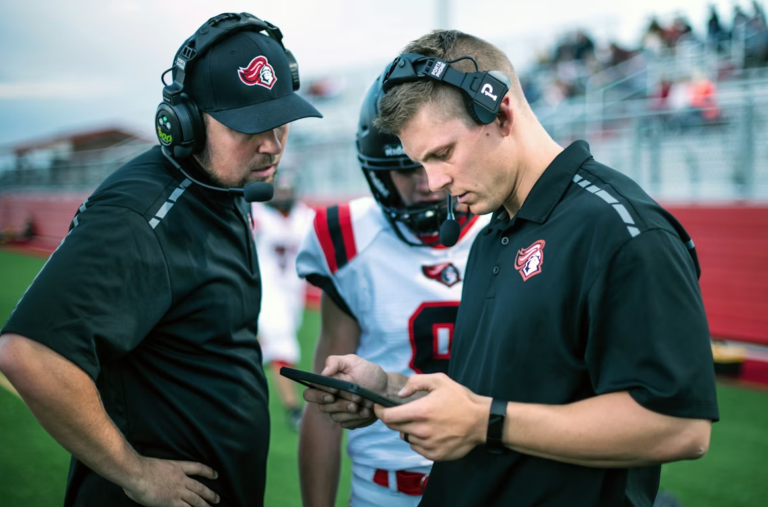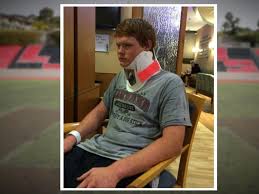
When we talk about safety in college sports facilities, most people think about injury prevention, proper equipment, and well-trained medical staff. But while these factors are crucial, certain dangers often go unnoticed.
According to Morones Analytics, among the big colleges in the country, 35% of total revenue is spent on coaching and staff salaries. In fact, the data shows that coaches in the top ten institutions all earn upwards of $9 million.
If you’re a coach who doesn’t earn these figures, it’s easy to just focus on your core responsibilities and wash your hands of other aspects. However, great coaches are often comfortable with blurring lines and getting proactive to ensure their team can perform at its best. Sometimes, that means acknowledging the state of the facilities the team trains in.
Even if you were to only report things to the administration, you still need to be aware of where the dangers exist for your team. In this article, we’ll explore these aspects in detail. Let’s dive in.
#1. Structural and Equipment Hazards
Athletic facilities are subjected to heavy use, and wear and tear on gym equipment, and stadium structures can quickly become a safety risk. Uneven flooring in weight rooms, cracked bleachers, and unstable goalposts are just a few examples of overlooked dangers.
Many colleges operate on tight budgets and this leads to delayed maintenance and repairs. Unfortunately, when structural hazards are ignored, they can lead to serious injuries. A poorly maintained pull-up bar or weightlifting station can suddenly collapse, while a damaged floor can cause sprained ankles or worse. So, if your team is practicing or competing in these conditions, you have to worry about the liabilities.
According to the American Academy of Orthopedic Surgeons, the most injured body sites for athletes were the head and face at 24.2%. This is followed by the ankle and knee at 17.6% and 14.1%. They also note that almost 34% to 39.2% of injuries led to time loss of up to three weeks. That’s a lot for an athlete.
#2. Water Contamination and Chemical Exposure
This might come as a surprise, but people don’t realize how much water colleges use for hydration stations, showers, pools, and field maintenance. Moreover, with older institutions, there’s a chance that some facilities may unknowingly expose athletes to harmful chemicals through their water supply.
Take the contamination caused by aqueous film-forming foam (AFFF), for example. This is a firefighting foam that’s often used in the military, but it’s also used in suppression systems at colleges and many large institutions. According to TruLaw, the chemicals in this foam are linked to serious health concerns like cancer and organ damage.
Many institutions are slowly moving away from their use, but some still lag behind. This is extremely dangerous, as there’s always a risk of contamination. The last thing you want is any of these chemicals accidentally mixing with the water supply that your athletes use.
This type of cross-contamination is not unheard of, and similar stories have happened in the past, such as the PFAS incident at the Marine base ‘Camp Lejeune.’
If you feel like the administration isn’t going to take it seriously, then educate them on the potential AFFF lawsuit settlement amounts. You might see a sudden change of behavior when they realize that settlement amounts can potentially exceed $1 million. These are forever chemicals, so if something like a fire drill happened even decades ago, it’s likely the chemicals are still present, especially in soil.
It might be worth investigating whether any such incidents have happened in areas where your team often trains.
#3. Air Quality and Ventilation Issues
Gyms, locker rooms, and training areas often suffer from poor ventilation, which leads to respiratory issues among athletes. Many of these spaces are enclosed and end up trapping dust, sweat, and cleaning chemical fumes. Over time, exposure to them can lead to lung irritation, allergies, and even chronic respiratory conditions.
There’s already data that shows how athletes already have a higher prevalence of respiratory issues. There’s a 20% to 70% variance across different sports, and exercise-induced bronchoconstriction is a common issue.
The last thing you want is for players to practice and train in environments that trigger these conditions even more. Mold growth is a particularly big concern in this regard. In many older buildings, moisture control is lacking, and that leads to hidden mold in walls, air ducts, and under rubber flooring.
As a coach, try your best to get administration to look into regular HVAC maintenance, dehumidifiers, and proper ventilation systems.
#4. Outdated Gear and Equipment
College athletes push their bodies to the limit and rely on well-maintained gear and equipment to keep them safe. But when schools fail to update or properly maintain sports equipment, athletes are put at risk for serious injuries.
You have to remember that sports like football can be particularly violent. Last year, linebacker Medrick Burnett Jr. passed away a month after he endured an injury. Burnett, who was only twenty years old, was critically injured after a head-on collision during an Alabama A&M vs. Alabama State University game.
If players in the top colleges with the best gear face these challenges, then smaller colleges with older equipment should be even more concerned. Helmets that have surpassed their recommended lifespan may no longer provide adequate shock absorption and increase the risk of concussions and traumatic brain injuries.
Similarly, shoulder pads and knee braces that have lost their structural integrity can leave players vulnerable to fractures, ligament tears, and other severe injuries. Sadly, some colleges continue using aging equipment due to budget constraints, unaware of how much of a liability it creates.
While you can’t do much about this on your own as a coach, it’s good to know where the pain points are. That way, you can quickly guide resources as and when they become available.
Frequently Asked Questions
1. What are 4 common injuries in sports?
The most common sports injuries include sprains, strains, fractures, and concussions (brain injuries from sudden blows). Proper warm-ups, conditioning, and protective gear go a long way in reducing the risk of these injuries.
2. What causes shortness of breath in athletes?
Shortness of breath in athletes can be caused by poor conditioning, asthma, dehydration, or overexertion. High-intensity exercise can also trigger exercise-induced bronchoconstriction (EIB), where airways narrow during activity. Staying hydrated, using proper breathing techniques, and conditioning can help manage or prevent these symptoms.
3. What gear should I get for football?
Essential football gear includes a helmet, shoulder pads, cleats, and a mouth guard for protection. Additional equipment like gloves, thigh and knee pads, and compression gear can also enhance safety and performance. It’s also important that the equipment is properly fitted on a player for the best effectiveness.
Athlete safety clearly extends to the very environments where they train and compete. As we’ve seen today, structural issues, air quality concerns, water contamination, and fire hazards are all risks that can be prevented with proper oversight.
If you can bring attention to overlooked safety concerns, then your college can create a safer environment for its athletes while avoiding costly legal consequences. It doesn’t matter that you may not have direct authority in the situation. As a coach, you work closely with the team, and their welfare gives you a lot of leverage, so use it wisely.


